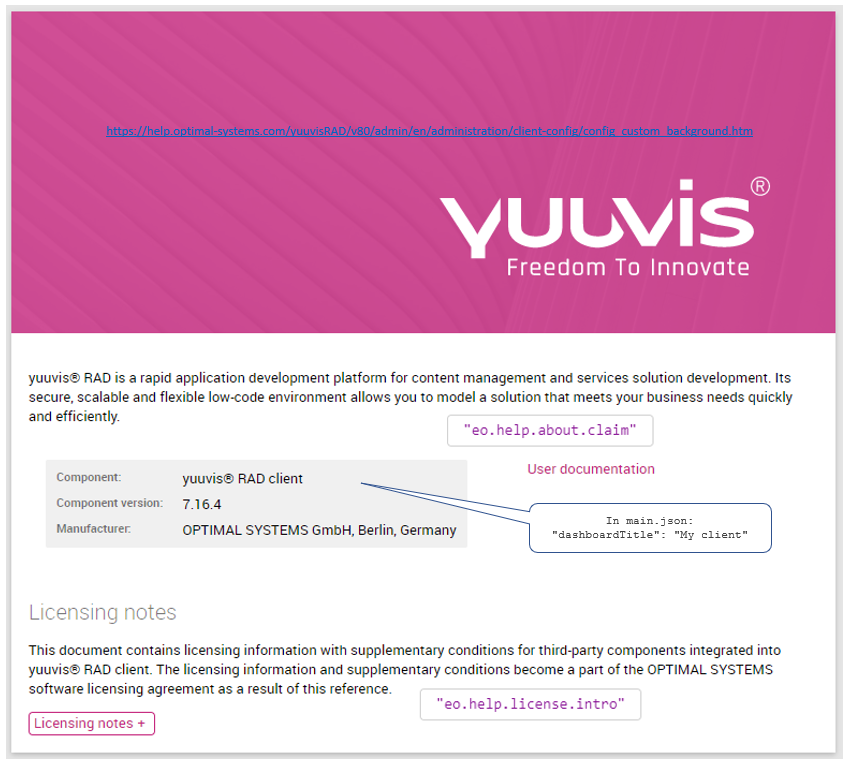...
- The application language files
English and German are delivered by default. Feel free to translate these into further languages which are supported including the correct formatting of data like numbers and dates. - The link to the user documentation
In case users are not allowed to access the internet, you can ask for an offline version of the documentation. This way, you can give users access to the documentation via your intranet. The URL to the documenation in the client has to be changed. - Background image of the start page and image of the sidebar
In case you want to display your own start page image as well as the image of the sidebar/about page, you can change it this way. - Title of the home screen
In case you want to display a different component name in the title of the browser tab of the dashboard as well as shown on the about page, you can change it this way. - Application logo ‚yuuvis‘
In case you want to display your own application logo, you can change it this way. - The About page
You can change the image, intro text, component name, documentation link, and license text.- Intro on the About page
In case you want to change the intro text on the About page, you can do so by modifying the value of theeo.help.about.claimkey in the language file of the client, e.g., en.json,. For more information on application langguages, refer to to this page. - License disclaimer on the About page
In case you want to change the license disclaimer on the About page, you can do so by modifying the value of theeo.help.license.introkey in the language file of the client, e.g., en.json. For mor information on application languges, refer to this page.
- Intro on the About page
Customizing by Developing your own Plug-ins or Clients
In the following, two more ways to develop an individual client are documented. We call this a custom client. The first way is to develop plug-ins and hook them into standard client open sources. The second way is to develop an entirely new client. In this way, you use only the core component which supports you with a client API which itself is documented per version here.
...
